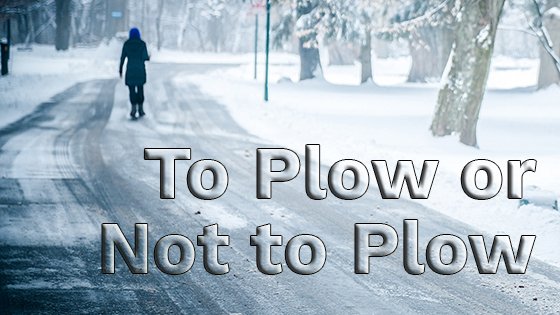…that is the question on everyone’s mind when wintery weather hits. Property owners commonly believe that “doing nothing” is the best protection against being held liable for injuries caused by snow or ice on their property. Another belief is that homeowners don’t have a duty to remove snow from areas where others walk. Unfortunately, these misunderstandings encourage owners to not clear driveways, sidewalks and parking lots, leaving dangerous conditions for other pedestrians.
It is true that retail stores, restaurants and hotels owe a higher standard of care to their visitors than residential owners. However, all property owners have a responsibility to take reasonable steps to make public and commonly used areas safe. Next time a winter storm is in the forecast, keep these five points in mind when deciding whether to plow:
- Natural Accumulation – Missouri and Illinois follow the natural accumulation or “Massachusetts” rule regarding snow and ice. That means there is no duty to remove snow or ice that accumulates naturally, and in Missouri, “is a condition general to the community.” *
- When injuries occur, disputes on whether accumulation is natural are often left for a jury to decide. Negligent design or maintenance of the underlying pavement are examples of factors that can contribute toward liability.
- The “general condition” clause is another element generally left to the discretion of a jury. A basic example of this is during a major snowfall. If it is still snowing and the entire town is affected, then the average person is believed to have full warning of unsafe conditions. On the other hand, if snowplows have begun to treat roads, and neighboring sidewalks and parking lots have been cleared, there might not be an assumed risk.
- Local Ordinances – Many cities and municipalities have their own snow removal ordinances and may issue a fine for failure to follow them. In most instances, these local laws require residential and commercial property owners to remove snow and ice from public areas, like sidewalks on or adjoining their property. In general, property owners are not liable for recent accumulations of snow and ice during a storm, but have a duty to shovel after the storm ends. Links to various Missouri and Illinois ordinances can be found below:
- Creating Hazards – Statutes in Missouri and Illinois have language that protect owners who make a good faith effort to clear accumulation. According to the Missouri Bar, “property owners who exercise ordinary care in clearing sidewalks and walkways are, in general, not any more liable for injuries than those who do nothing.” The same goes in Illinois where the law safeguards owners, so long as the intent was not “willful or wanton.” Examples of intentional or careless hazards include: dumping water on a walkway to freeze, failing to salt to prevent refreeze, and shoveling a snow pile in front of an entrance.
- Written Agreements – Written agreements, such as a lease or contract, can change the scope of duty to remove natural accumulations. ** Per the agreement, a property owner may be required to provide snow removal for their tenant or lessee. Similarly, it may also release the owner of obligation to perform snow and ice removal.
- Auto Debris – Snow removal doesn’t stop with land owners. Vehicle owners also should consider cleaning snow and ice off their cars and trucks in an effort to protect passengers in other automobiles. Missouri and Illinois require drivers to have a clear, unobstructed view from their windshields. If something, such as snow or ice, flies off the car, law enforcement can fine the driver. If the negligence results in the injury or death of another person, it could also be grounds for a civil lawsuit.
Walkways and parking lots are used by everyone, including delivery persons, seniors, children and those with disabilities. As a property owner, plowing snow and ice is not only a courteous thing to do, but it also benefits the safety and well-being of visitors. If a person does happen to get injured, it is more likely for a party who “did nothing” to be held liable in comparison to an owner who made a reasonable attempt to prevent or clear the dangerous condition.
Determining liability in a snow and ice injury case is a complex issue with many factors, and every case is different. If you or someone you know has suffered a slip or fall injury because of the negligence of a property owner, contact the office of Padberg Appelbaum Knepper today to set up a free consultation. Or, learn more about premises liability cases, here.
*Richey v. DP Properties, 252 S.W.3d 249, 251 (Mo.App.2008)
**Schoondyke v. Heil, Heil, Smart & Golee, Inc., 89 Ill.App.3d 640, 411 N.E.2d 1168, 44 Ill.Dec. 802 (1st Dist.1980)

